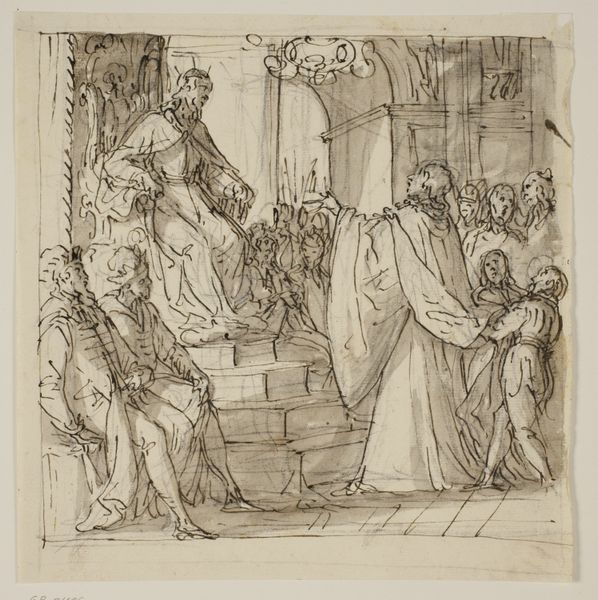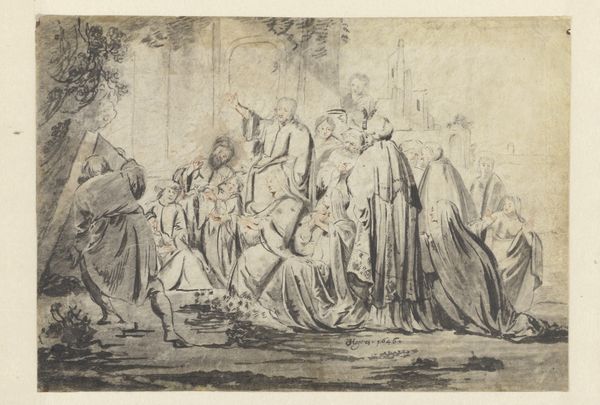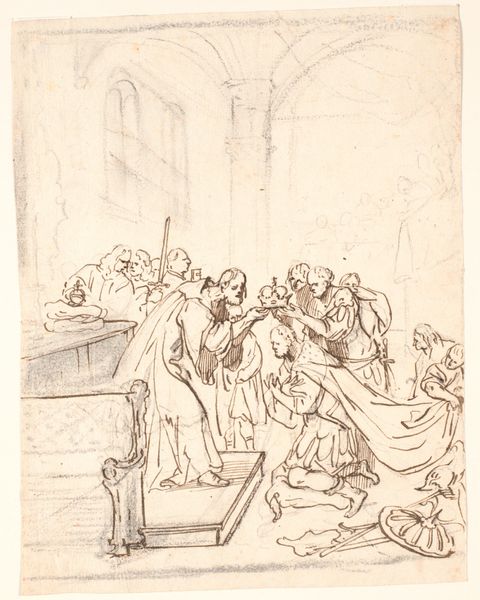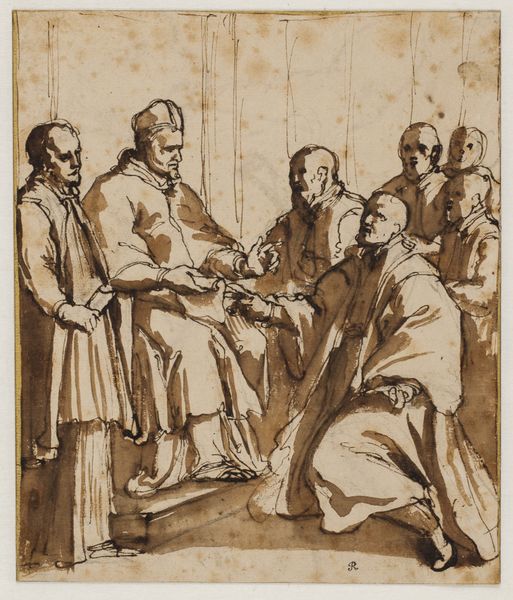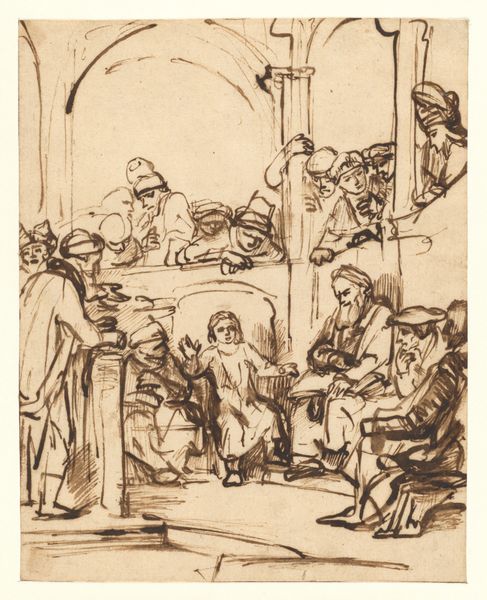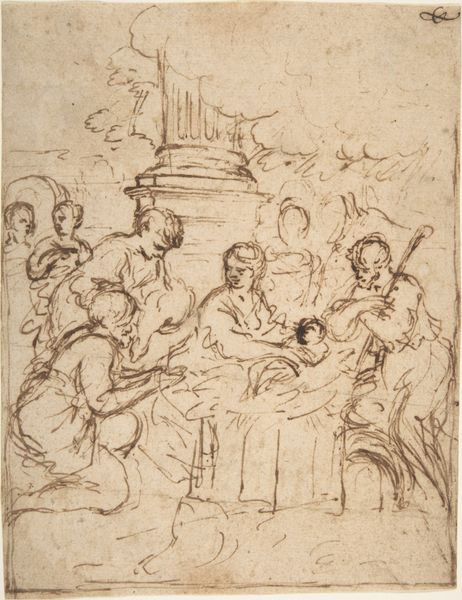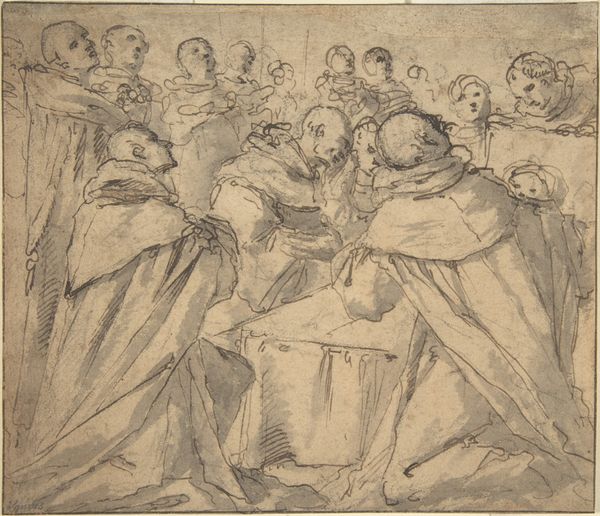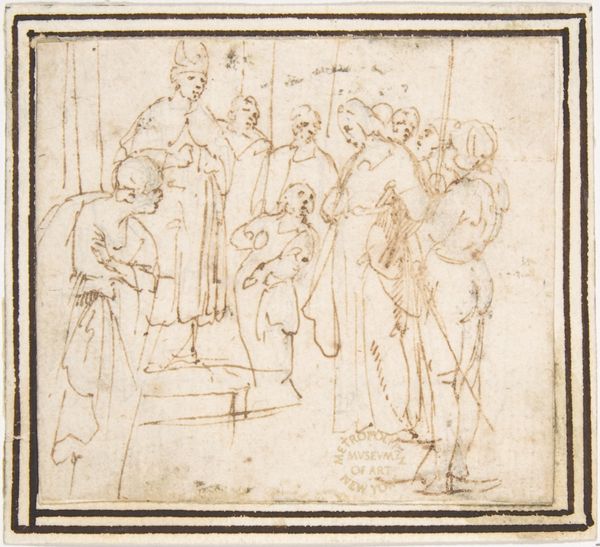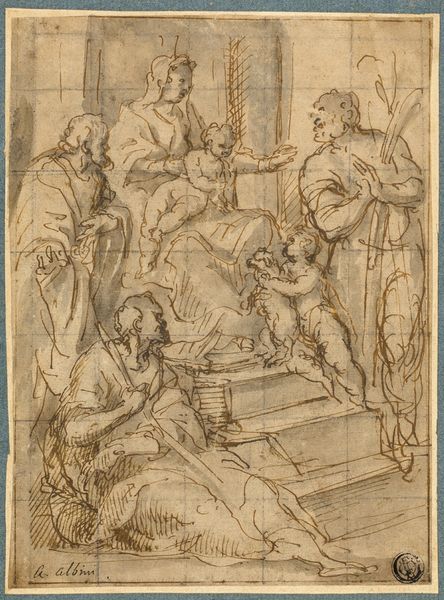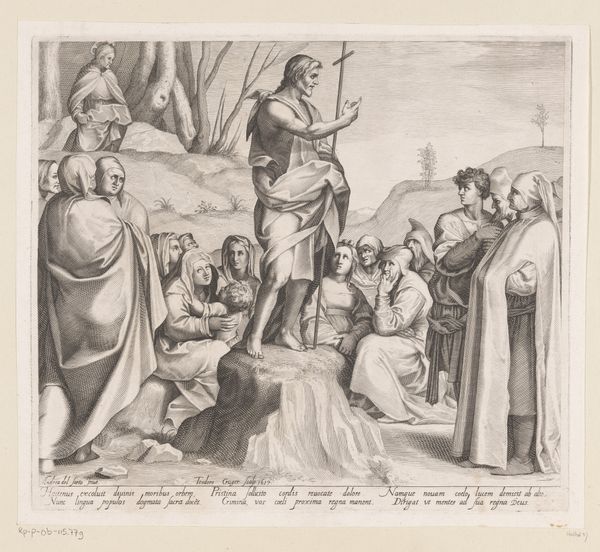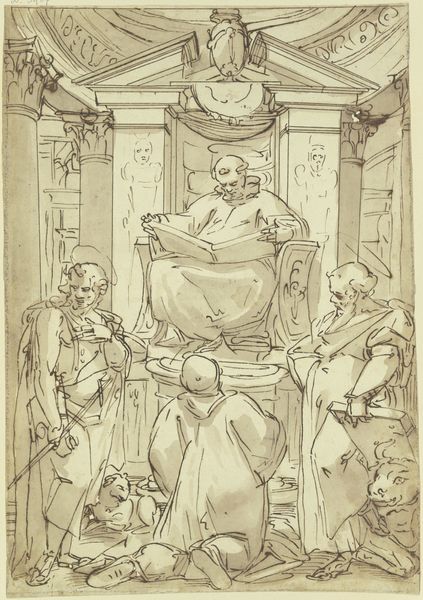
drawing, ink
#
drawing
#
medieval
#
narrative-art
#
figuration
#
ink
#
history-painting
Dimensions: 214 mm (height) x 182 mm (width) (bladmaal)
Editor: We're looking at Dankvart Dreyer's "Historical Scene: A Dying Clergyman," created in the 1840s using ink on paper. The sepia tones and delicate linework create such a somber mood. What symbolic weight do you think Dreyer was trying to convey? Curator: Indeed. Notice how the tight composition frames the dying clergyman surrounded by figures – a visual echo of mourning traditions throughout history. The monk holding what appears to be a reliquary, for example, presents the idea of a spiritual transfer from life to death. This is not merely an historical scene, but a potent symbol of mortality. What emotional responses are conjured by the repeated presence of hooded figures, a convention of medieval representation? Editor: I see, the hoods do lend a sense of anonymity, like death could claim anyone, regardless of status. The way Dreyer uses line emphasizes their unified presence, too. How does that tie into a broader cultural understanding of death and remembrance? Curator: Precisely. It speaks to a shared experience, a cultural understanding of death as both individual and communal. These visual markers – the gathered community, the solemn ritual, the symbolic objects – create a powerful cultural script. Dreyer isn't just depicting death, he's tapping into our collective understanding of its rituals and meanings. It also makes me think: Why sepia, instead of full color? Editor: That's a great question. The sepia washes away distractions and lets the symbols really rise to the surface. It almost makes the scene feel ancient and immediate, at the same time. Curator: Absolutely. This way the work engages us with an enduring legacy, prompting reflection about life’s transient and transcendent aspects. Editor: I had not thought about the universality and the intent. Thank you.
Comments
No comments
Be the first to comment and join the conversation on the ultimate creative platform.
